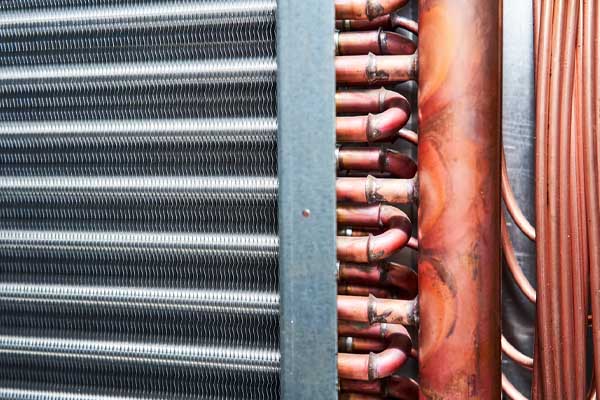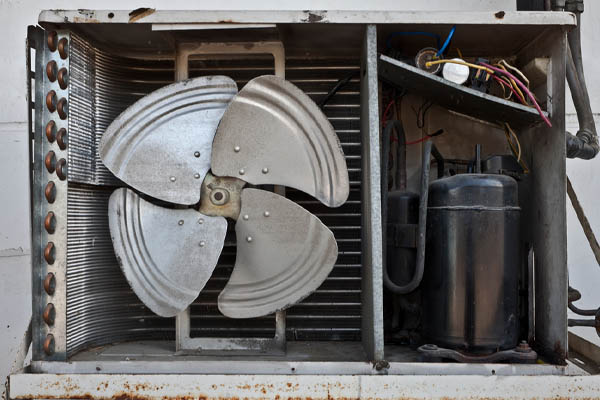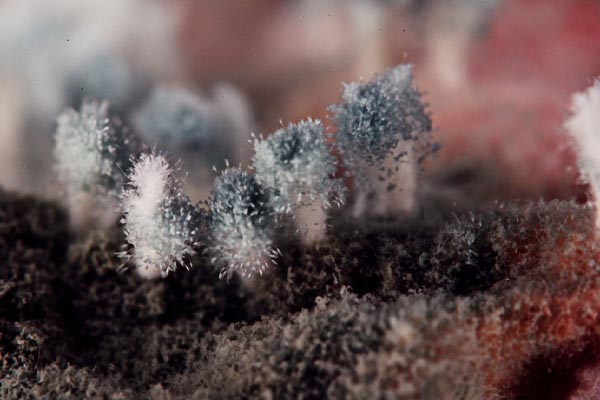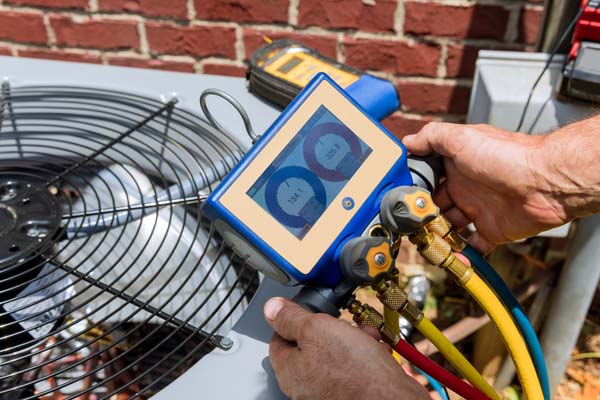What’s The Difference Between A/C Condensers & Evaporator Coils?

Air conditioners move heat. Many think that air conditioners directly produce cold air. However, this isn’t the case as they absorb the heat inside and release it outdoors. Several cycles of heat transfer will gradually cool down your home, making it more comfortable. Much of the work behind the scenes are performed by the condenser coils and evaporator coils. They may look similar, but they have opposite functionality to generate the desired effects. Read on to learn more about the differences between a condenser vs evaporator coil.
What’s The Difference Between AC Condensers & Evaporator Coils?
Contents
How do central air conditioners work? They consist of two main components: the indoor unit and the outdoor AC unit. They are linked together by tubes containing a chemical called the “refrigerant.” This substance can absorb high amounts of heat. Depending on the pressure, it can change from liquid to gas and vice versa. When your air conditioner is switched on, the refrigerant travels from the indoor unit to the outdoor unit and back. Here is a look at how coils fit in all this:
The Air Conditioner’s Evaporator Coil
The evaporator coil is in the indoor unit. It is made of copper tubes which extremely cold refrigerant flows through. The coil is continuously exposed to warm indoor air that the system blower draws in. The refrigerant in the evaporator coil tubes absorbs the heat from the air. This also reduces the humidity. Once the air is drier and cooler, the blower pushes it back inside so the occupants can enjoy a cool home.
The refrigerant continuously journeys across the system. It leaves the evaporator coil slightly hotter than when it entered. It travels through an insulated conduit until it gets to the outdoor unit. This is a large cabinet that has the compressor and the condenser coils. It starts with the refrigerant going in the compressor, pressurizing the substance to push its temperature higher. The superheated state allows for a more efficient heat transfer from the refrigerant to the outdoor air.
The AC’s Condenser Coil
If you place the condenser and evaporator coils next to each other, you will notice they have the same designs and materials. The difference is that they have opposite functions. The evaporator coil gathers heat while the condenser coil releases it. This cycle is repeated several times until the set temperature in the thermostat is achieved. You may hear the compressor and the fans emitting a low hum as they work in the distance.
The hot refrigerant vapor releases the heat into the environment and cools into its liquid state. A fan helps this process by blowing outdoor air through the condenser coil. The refrigerant returns to its liquid form and is ready to return to the indoor unit’s evaporator coil. It passes through an expansion valve, cools down, and becomes vapor again. This helps it absorb more heat for the next cycle.
Air Conditioner Coil Maintenance
Like other air conditioner parts, coils need periodic maintenance to work optimally. This applies to both the condenser coils and the evaporator coils. It isn’t hard to prevent common issues. All that’s needed is an annual air conditioner maintenance visit from a certified HVAC contractor. Aside from coil tune-ups, they will inspect other components to ensure all parts work properly. They will go through the standard air conditioner maintenance checklist to ensure optimum energy efficiency and longer service life.
Common Air Conditioner Coil Issues
Here are several common problems air conditioner coils may experience:
Corrosion

Evaporator coils are made of aluminum and copper. They won’t rust like steel but may eventually go through corrosion and pitting. They may also develop cracks and holes. These problems may not be noticed right away, but homeowners will feel their effects because the refrigerant will slowly leak out of the system. Toxic substances may spread throughout your home. The cooling system’s performance will also plummet because there is an inadequate refrigerant amount to absorb indoor heat. HVAC contractors can find and seal the leaks before recharging the system with new refrigerant.
Dirt
Dust can find its way into your air conditioner. Some may settle on the coils and form a thick insulation layer. This significantly reduces heat transfer, so the coils cannot do their respective tasks. The fans will run longer to reach the desired thermostat settings. This increases wear and tear on different parts. It also causes higher energy consumption, which pushes energy spending higher. Prevent this problem with regular maintenance.
Mold

Indoor units have a damp and dark interior. They don’t receive sunlight to fight off bacteria and fungi. This makes them ideal environments for mold and mildew growth. These can thrive in the system and use the ducts to distribute their spores throughout the house. The indoor air quality will drop, along with your family’s health. They may even keep the air from flowing properly through the evaporator coil’s fins.
Debris
The outdoor air conditioning unit is susceptible to debris infiltration. For instance, twigs, dry leaves, and other wastes may enter the system. If these fall to the bottom, they may block the airflow to the condenser coil. This slows down the refrigerant from releasing heat to the environment. Keep the unit’s perimeter free from plants to avoid this. It is also better to do periodic air conditioner coil cleaning.
Air Conditioner Refrigerant Problems

Many reasons can cause your air conditioner not to provide adequate cooling to your home. If it worked fine before the problem started, you might have a low refrigerant issue on your hands. The coils require a certain refrigerant amount to accumulate enough heat and release it out of the house. Having an insufficient amount of refrigerant will keep your home warm during the summer. It may also result in frozen coils and system shutdowns. Seek help from an HVAC professional if these happen.
Conclusion
Air conditioners are cleverly designed to move heat around to achieve a cool home environment. They utilize a refrigerant that travels through the coils. It absorbs indoor heat in the evaporator coil and goes to the condenser coil, where the heat is released outdoors. These coils work hand-in-hand to produce the desired results. Watch out for common coil issues. Prevent them by booking professional maintenance at least once a year.
Call Lawes Company For HVAC Repair Requirements

Lawes Company provides advanced heating and cooling services for residents of Monmouth and Ocean Counties, New Jersey. By working with us, you are assured of a certified technician who is able to provide excellence in HVAC tune-ups, timely repairs, professional installation, and more. All of our techs have the knowledge as well as the experience to service HVAC systems correctly.
Lawes Company guarantees competitive heating and cooling costs. Our maintenance service is sure to improve your comfort, increase energy efficiency and reduce home heating and cooling expense. If you need an HVAC repair or a replacement system, let us recommend the best solution for your home while working within your budget. Our company backs our work with a guarantee to ensure your satisfaction. If you are ready to schedule an appointment, just pick up your phone and give Lawes Company a call. Ask us about our free, in-home estimates.
Contact us now at (732) 741-6300 to find out more! Click the link to view our service area.